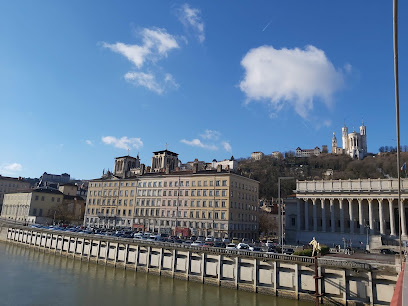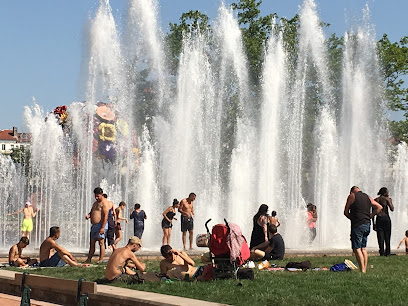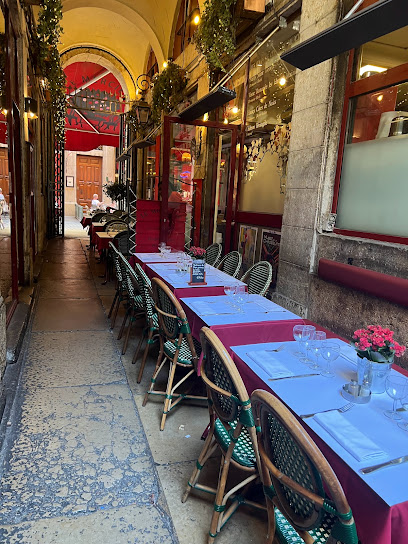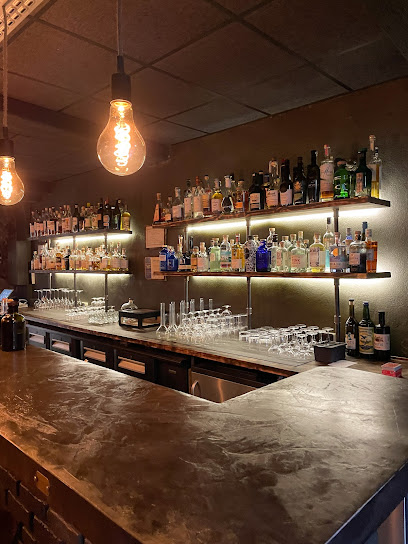
The Vibrant Heart of Lyon: Presqu'île
Discover the vibrant heart of Lyon in Presqu'île, where history meets modernity, offering a perfect blend of cultural landmarks, culinary delights, and scenic river views.
Nestled between the Rhône and Saône rivers, Presqu'île is the vibrant heart of Lyon, offering an eclectic mix of cultural, historical, and culinary experiences. This peninsular district is a perfect blend of old-world charm and modernity, making it a must-visit for any traveler. Start your exploration at Place Bellecour, one of the largest open squares in Europe. Here, you can marvel at the iconic statue of Louis XIV and enjoy the lively atmosphere. The square is surrounded by shops, cafes, and restaurants, providing plenty of opportunities to indulge in some retail therapy or savor delicious Lyonnaise cuisine. Art enthusiasts will find solace in the Musée des Beaux-Arts, housed in a former 17th-century Benedictine convent. The museum boasts an impressive collection of European paintings, sculptures, and antiquities. A short stroll away is the Opéra Nouvel, an architectural marvel and a hub for classical music performances. For a taste of local life, wander through the bustling streets of Rue de la République and Rue Mercière. These pedestrian-friendly areas are lined with boutiques, bistros, and bars, offering everything from trendy fashion to traditional French pastries. The charm of Presqu'île lies in its ability to seamlessly blend the old with the new, making it a fascinating area to explore at any time of day. End your day with a relaxing walk along the riverbanks or hop on a boat cruise to see Lyon from a different perspective. The illuminated bridges and buildings create a magical ambiance, making Presqu'île an unforgettable destination.
Local tips in Presqu'île
- Visit early in the morning or late afternoon to avoid the crowds, especially at Place Bellecour and Rue de la République.
- Wear comfortable shoes; the best way to explore Presqu'île is on foot.
- Try the local specialty, 'Praline Tart,' at one of the many patisseries in the area.
- Check the schedule at Opéra Nouvel in advance if you wish to attend a performance.
- Take a boat cruise at sunset for the most picturesque views of the rivers and cityscape.
The Vibrant Heart of Lyon: Presqu'île
Nestled between the Rhône and Saône rivers, Presqu'île is the vibrant heart of Lyon, offering an eclectic mix of cultural, historical, and culinary experiences. This peninsular district is a perfect blend of old-world charm and modernity, making it a must-visit for any traveler. Start your exploration at Place Bellecour, one of the largest open squares in Europe. Here, you can marvel at the iconic statue of Louis XIV and enjoy the lively atmosphere. The square is surrounded by shops, cafes, and restaurants, providing plenty of opportunities to indulge in some retail therapy or savor delicious Lyonnaise cuisine. Art enthusiasts will find solace in the Musée des Beaux-Arts, housed in a former 17th-century Benedictine convent. The museum boasts an impressive collection of European paintings, sculptures, and antiquities. A short stroll away is the Opéra Nouvel, an architectural marvel and a hub for classical music performances. For a taste of local life, wander through the bustling streets of Rue de la République and Rue Mercière. These pedestrian-friendly areas are lined with boutiques, bistros, and bars, offering everything from trendy fashion to traditional French pastries. The charm of Presqu'île lies in its ability to seamlessly blend the old with the new, making it a fascinating area to explore at any time of day. End your day with a relaxing walk along the riverbanks or hop on a boat cruise to see Lyon from a different perspective. The illuminated bridges and buildings create a magical ambiance, making Presqu'île an unforgettable destination.
Iconic landmarks you can’t miss
Parc de la Tête d'Or
Explore the lush landscapes of Parc de la Tête d'Or, Lyon's largest urban park, featuring stunning botanical gardens, a serene lake, and family-friendly attractions.

Fresque des Lyonnais
Discover the Fresque des Lyonnais, a captivating mural that celebrates Lyon's rich history and artistic spirit, a must-see for every traveler.

Mur des Canuts
Discover the Mur des Canuts, a breathtaking mural that captures Lyon's rich history and vibrant culture in the heart of the city.

Porte des Enfants du Rhône
Experience the lush beauty of Porte des Enfants du Rhône, a picturesque park gem in Lyon, perfect for relaxation, exploration, and family fun.

Bartholdi Fountain
Explore the Bartholdi Fountain in Lyon, a stunning monument showcasing artistic brilliance and historical significance in a vibrant city square.

Jardin Archéologique
Explore the lush landscapes and historical ruins at Jardin Archéologique, a serene escape in the heart of Lyon, perfect for relaxation and discovery.

Statue of the Republic
Explore the Statue of the Republic in Lyon, a stunning historical landmark symbolizing liberty and justice in the heart of the city.

Maison Thomassin
Explore the architectural beauty and rich heritage of Maison Thomassin, a must-visit attraction in the heart of Lyon.

Monument aux Morts de l'île du Souvenir
Explore the Monument aux Morts de l'île du Souvenir in Lyon, a historic landmark honoring the brave souls who sacrificed their lives during wartime.

Insula basilicale
Discover the Insula Basilicale in Lyon, a stunning historical landmark revealing the city's rich architectural heritage and captivating stories from the past.

Unmissable attractions to see
Place Bellecour
Experience the charm of Place Bellecour, a historic plaza in Lyon, blending culture, architecture, and vibrant city life in one stunning location.

Bartholdi Fountain
Discover the Bartholdi Fountain, a stunning monument in Lyon's Place des Terreaux, blending art, history, and vibrant city life.

Jardin Archéologique
Explore the captivating blend of history and nature at Jardin Archéologique in Lyon, a tranquil garden filled with ancient Roman ruins and lush greenery.

Cybele - unusual visits to Lyon
Explore Lyon's unique history and culture with Cybele's expertly guided tours through the city's hidden gems and iconic landmarks.

Fontaine de Place Antonin Poncet
Explore the stunning Fountain of Place Antonin Poncet in Lyon, a captivating blend of art, history, and urban tranquility.

Monument aux Morts de l'île du Souvenir
Discover the Monument aux Morts de l'île du Souvenir in Lyon, a historical landmark honoring the sacrifices of soldiers with serene beauty and profound history.

Essential places to dine
Carmelo
Discover authentic Italian flavors at Carmelo in Lyon - where every dish is crafted with passion and tradition.

Matsuri Lyon Presqu'ile
Discover authentic Japanese flavors at Matsuri Lyon Presqu'île – where culinary tradition meets modern dining in the heart of Lyon.

Chez Grand-Mère
Experience authentic French cuisine at Chez Grand-Mère in Lyon – where every dish is crafted with love and tradition.

Les Fils À Maman Lyon
Experience the charm of French cuisine at Les Fils À Maman in Lyon - where traditional flavors meet modern twists in a cozy setting.

Le Mercière
Experience authentic French cuisine and fine wines at Le Mercière in Lyon – a culinary gem in France's gastronomic capital.

CASABEA - Cuisine méditerranéenne
Discover CASABEA: A Mediterranean haven in Lyon serving exquisite dishes and fine wines in a warm ambiance.

Bulle - Restaurant de Fourvière - Guy Lassausaie
Experience exquisite haute French cuisine at Bulle - Restaurant de Fourvière while enjoying breathtaking views of Lyon's skyline.

Le Winch
Experience authentic French cuisine at Le Winch in Lyon—a culinary haven blending tradition with modern flair.

Restaurant Léon de Lyon
Experience the culinary brilliance at Restaurant Léon de Lyon, where traditional French cuisine meets innovative cocktails in a charming setting.

L'Atelier des Augustins
Discover exquisite modern French cuisine at L'Atelier des Augustins, where culinary artistry meets elegance in every dish.

Monsieur P
Experience exquisite haute French cuisine in Lyon at Monsieur P – where tradition meets innovation in every dish.

La Nef Des Fous
Discover La Nef Des Fous in Lyon - where authentic French cuisine meets warm hospitality in an inviting atmosphere.

Nosch
Discover Nosch in Lyon: A French restaurant and wine bar offering authentic cuisine and an extensive selection of fine wines.

PRAIRIAL • Confluence
Discover exquisite haute French cuisine at Prairial in Lyon – where every dish tells a story of culinary artistry.

LE PASSE TEMPS
Experience exquisite French fine dining at Le Passe Temps in Lyon - where culinary artistry meets elegant ambiance.

Markets, malls and hidden boutiques
Nature and Discoveries
Explore Nature and Discoveries in Lyon - your destination for unique, eco-friendly gifts and souvenirs that celebrate nature's beauty.

Pop and Shoes | Concept store Lyon & e-shop
Explore the stylish world of Pop and Shoes, a trendy boutique in Lyon offering unique clothing and footwear for the modern traveler.

Les Pièces Vintage Store
Explore the unique charm of Les Pièces Vintage Store in Lyon, where nostalgic fashion meets modern style in a curated vintage shopping experience.

L'effet canopée Lyon 1 - Concept-store à Lyon et en ligne
Explore L'effet Canopée in Lyon for unique handmade gifts and eco-friendly products that reflect the spirit of this vibrant city.

Graphiti Lyon
Explore Graphiti Lyon for a unique and stylish collection of clothing, handbags, and leather goods in the heart of the city.

Little Liamone - Concept Store - Bar à Plantes
Explore Little Liamone, a unique concept store in Lyon offering gifts, costume jewelry, and indoor plants for a memorable shopping experience.

Shops Lyon
Discover the ultimate shopping experience in Lyon with exquisite women's clothing, luxurious accessories, and unique gifts in a chic setting.

7ici - Boutique de créateurs & Ateliers créatifs
Explore 7ici, a boutique in Lyon showcasing local craftsmanship, unique gifts, and creative workshops for an unforgettable shopping experience.

Les Artpenteuses
Explore Les Artpenteuses in Lyon for unique gifts, home decor, and stunning jewelry that capture the essence of the city.

Mes Demoiselles | Magasin Lyon 2 | Presqu'Île
Explore Mes Demoiselles in Lyon for exquisite women's fashion, bridal wear, and stylish accessories in a charming boutique atmosphere.

Essential bars & hidden hideouts
La Barge
Discover La Barge, a vibrant bar and restaurant in Lyon offering exquisite tapas, cocktails, and local wines along the scenic Rhône river.

Funky Monky Lyon - Bar - Restaurant - Tapas
Discover the taste of Lyon at Funky Monky, a lively tapas bar offering an array of flavors and a vibrant atmosphere for a memorable dining experience.

The Monkey Club Cocktail Bar
Discover the vibrant nightlife of Lyon at The Monkey Club Cocktail Bar, where innovative cocktails meet a lively atmosphere for an unforgettable experience.

Bar Le Florian, Cocktails & Spirits
Discover the vibrant nightlife of Lyon at Bar Le Florian, where expertly crafted cocktails and a lively atmosphere await you.

The Phantom of the Opera
Experience the vibrant nightlife of Lyon at The Phantom of the Opera, a chic cocktail bar and lounge with innovative drinks and a lively atmosphere.

Black Forest Society
Discover the enchanting cocktail experience at Black Forest Society in Lyon, where creativity meets enjoyment in every sip.

Le Welsh Beer Bar
Discover Lyon's vibrant beer culture at Le Welsh Beer Bar, where craft brews and friendly vibes await every visitor.

Le Lion Bar
Experience the vibrant atmosphere of Le Lion Bar, a top cocktail and tapas destination in the heart of Lyon, perfect for both relaxation and celebration.

Quai22 - Bar - Tapas - Cocktails - Vins
Explore the vibrant culinary scene at Quai22, offering exquisite tapas and innovative cocktails in the heart of Lyon.

Le Grisbi
Experience the lively ambiance and exquisite cocktails at Le Grisbi, a vibrant cocktail bar in Lyon's nightlife scene.

Local Phrases
-
- HelloBonjour
[bon-zhoor] - GoodbyeAu revoir
[oh ruh-vwahr] - YesOui
[wee] - NoNon
[nohn] - Please/You're welcomeS'il vous plaît / De rien
[seel voo pleh / duh ryen] - Thank youMerci
[mehr-see] - Excuse me/SorryExcusez-moi / Désolé
[ehk-skew-zay mwah / day-zoh-lay] - How are you?Comment ça va?
[koh-mohn sah vah] - Fine. And you?Bien. Et toi?
[byen. ay twah] - Do you speak English?Parlez-vous anglais?
[par-lay voo ahn-glay] - I don't understandJe ne comprends pas
[zhuh nuh kohm-prahn pah]
- HelloBonjour
-
- I'd like to see the menu, pleaseJe voudrais voir la carte, s'il vous plaît
[zhuh voo-dray vwahr lah kart, seel voo pleh] - I don't eat meatJe ne mange pas de viande
[zhuh nuh mahnj pah duh vee-and] - Cheers!Santé!
[sahn-tay] - I would like to pay, pleaseJe voudrais payer, s'il vous plaît
[zhuh voo-dray pay-ay, seel voo pleh]
- I'd like to see the menu, pleaseJe voudrais voir la carte, s'il vous plaît
-
- Help!Au secours!
[oh suh-coor] - Go away!Allez-vous-en!
[ah-lay vooz ahn] - Call the Police!Appelez la police!
[ah-peh-lay lah poh-lees] - Call a doctor!Appelez un médecin!
[ah-peh-lay ahn mayd-sahn] - I'm lostJe suis perdu
[zhuh swee pair-doo] - I'm illJe suis malade
[zhuh swee mah-lahd]
- Help!Au secours!
-
- I'd like to buy...Je voudrais acheter...
[zhuh voo-dray zah-shtay...] - I'm just lookingJe regarde juste
[zhuh ruh-gahrd zhuhst] - How much is it?Combien ça coûte?
[kohm-byen sah koot] - That's too expensiveC'est trop cher
[say troh shair] - Can you lower the price?Pouvez-vous baisser le prix?
[poo-veh voo bay-say luh pree]
- I'd like to buy...Je voudrais acheter...
-
- What time is it?Quelle heure est-il?
[kehl uhr eh-teel] - It's one o'clockIl est une heure
[eel ehz unn uhr] - Half past (10)Dix heures et demie
[dees uhrz ay duh-mee] - MorningMatin
[mah-tahn] - AfternoonAprès-midi
[ah-pray-mee-dee] - EveningSoir
[swahr] - YesterdayHier
[yehr] - TodayAujourd'hui
[oh-zhoor-dwee] - TomorrowDemain
[duh-mahn] - 1Un
[uhn] - 2Deux
[duh] - 3Trois
[twa] - 4Quatre
[kat-ruh] - 5Cinq
[sank] - 6Six
[sees] - 7Sept
[sept] - 8Huit
[weet] - 9Neuf
[nuff] - 10Dix
[dees]
- What time is it?Quelle heure est-il?
-
- Where's a/the...?Où est le/la...?
[oo eh luh/lah] - What's the address?Quelle est l'adresse?
[kehl eh lah-dress] - Can you show me (on the map)?Pouvez-vous me montrer (sur la carte)?
[poo-veh voo muh mohn-tray (soor lah kart)] - When's the next (bus)?Quand est le prochain (bus)?
[kahnd eh luh proh-shan (boos)] - A ticket (to ....)Un billet (pour ...)
[uhn bee-yay (poor)]
- Where's a/the...?Où est le/la...?
History of Presqu'île
-
Presqu'île, the peninsula formed by the confluence of the Rhône and Saône rivers, has its roots in Roman history. Founded as Lugdunum in 43 BC, it quickly became a significant city in the Roman Empire. The area was strategically important as a trade hub, facilitating commerce between the Mediterranean and the northern provinces. Remnants of Roman architecture, such as the ancient theatre, can still be found in the city.
-
During the medieval period, Presqu'île experienced substantial growth. The area became the heart of Lyon's trade and commerce, with the establishment of marketplaces and guilds. The construction of notable buildings, like the Basilica of Saint-Martin d'Ainay, marked this period. The architecture reflects the burgeoning prosperity and the cultural exchange that defined this era.
-
The Renaissance brought about a cultural and artistic flourishing in Presqu'île. Wealthy merchants and silk traders invested in grandiose palaces and buildings, many of which still stand today. The region became known for its silk production, which was integral to Lyon's economy. The Hôtel de Ville, or City Hall, built during this period, showcases the architectural grandeur of the time.
-
The 19th century marked the onset of the Industrial Revolution in Lyon, leading to significant urbanization in Presqu'île. Factories and workshops proliferated, and the population swelled as workers migrated to the area. This period saw the construction of the famous Rue de la République, a grand boulevard that exemplified the city's modernization efforts.
-
During World War II, Lyon was a center of the French Resistance against Nazi occupation. Presqu'île played a pivotal role in the resistance movements, with many secret meetings and operations taking place in the neighbourhood. Post-war reconstruction efforts transformed the area, with a focus on modernizing infrastructure and restoring historical sites.
-
Today, Presqu'île is recognized as the cultural and commercial heart of Lyon. The neighbourhood boasts a vibrant atmosphere with shops, restaurants, and art galleries. Events like the Fête des Lumières, which illuminates the city with artistic displays, highlight the area's ongoing cultural significance. The preservation of historical sites alongside modern developments reflects Lyon's dynamic identity.
Presqu'île Essentials
-
Presqu'île is centrally located in Lyon, bordered by the Rhône and Saône rivers. You can easily reach it via public transport. From Lyon Part-Dieu train station, take Metro Line B towards Jean Macé and transfer to Line A at Bellecour. Alternatively, trams T1 and T2 from Part-Dieu also lead directly to the Presqu'île. If you're arriving from the airport, the Rhônexpress tram connects Lyon-Saint Exupéry Airport to the city center, with a stop at Part-Dieu.
-
Navigating Presqu'île is convenient, as it is highly walkable. The public transport system in Lyon is efficient, with Metro, trams, and buses readily available. The Metro stations, particularly those on Lines A and D, are the most useful for accessing various parts of the neighbourhood. Bicycles can be rented through the Vélo'v bike-sharing system, with numerous stations available throughout the area. Walking is often the best way to explore the charming streets and squares.
-
Presqu'île is generally safe for tourists, but it's always wise to exercise caution. Areas around the Place des Terreaux and Rue de la République can experience petty crime, particularly pickpocketing in crowded places. Stay vigilant, especially in tourist hotspots and avoid displaying valuables. It's advisable not to wander alone late at night in secluded streets.
-
In case of an emergency, dial 112 for police, fire, or medical assistance. The local hospitals are well-equipped to handle emergencies. Pharmacies are abundant, and most carry basic over-the-counter medications. It's a good idea to have travel insurance that covers medical emergencies before your trip.
-
Fashion: Do dress comfortably but smartly; casual chic is the norm in Presqu'île. Avoid overly casual attire, especially when dining out. Religion: Do be respectful when visiting churches and religious sites; modest attire is appreciated. Public Transport: Do validate your ticket before boarding and be polite to fellow passengers. Don’t eat or drink on public transport. Greetings: Do greet with a friendly 'Bonjour' and a smile. Eating & Drinking: Do try local specialties like quenelles and tarte à la praline; don't be rude to servers, as politeness is valued.
-
To experience Presqu'île like a local, visit the Marché de la Croix-Rousse for fresh produce and artisanal goods. Explore the hidden traboules (passageways) that connect streets and offer a glimpse into Lyon's history. Enjoy a café in one of the many squares and take time to people-watch. Try to speak a few French phrases, as locals appreciate the effort. Lastly, visit during the Fête des Lumières in December for an unforgettable experience of light installations across the neighbourhood.
Nearby Cities to Presqu'île
-
Things To Do in Grenoble
-
Things To Do in Annecy
-
Things To Do in Geneva
-
Things To Do in Lausanne
-
Things To Do in Vevey
-
Things To Do in Dijon
-
Things To Do in Montreux
-
Things To Do in Avignon
-
Things To Do in Nîmes
-
Things To Do in Zermatt
-
Things To Do in Turin
-
Things To Do in Bern
-
Things To Do in Thun
-
Things To Do in Murren
-
Things To Do in Montpellier













